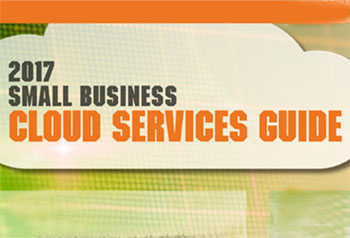No more ‘wait and see’ for cloud
Cloud-based and SaaS solutions have become the preferred platform for businesses of all sizes in 2017, but are…
Cloud-based and SaaS solutions have become the preferred platform for businesses of all sizes in 2017, but are businesses making the most of the benefits? NZBusiness addresses some of the lingering questions surrounding cloud delivery
Those beautiful lyrics from Joni Mitchell’s 60s classic Both Sides Now spring to mind when reviewing today’s cloud computing landscape. If you’re old enough you may recall the verse:
I’ve looked at clouds from both sides now
From up and down and still somehow
It’s cloud’s illusions I recall
I really don’t know clouds at all…
Those words almost echo the adoption of cloud-based (read online hosted) business solutions in recent years. Businesses, and I include larger organisations here, have indeed considered cloud software from ‘all sides’ now. Most understand its unique advantages and have left desktop solutions behind for good.
But some still really don’t know cloud at all.
As technology evangelist, investor, and business adviser Ben Kepes (diversity.net.nz) points out, new technology waves are typically adopted by more forward-thinking organisations first, while more conservative business owners tend to take a ‘wait and see’ attitude.
But the time for ‘wait and see’ is over – even for larger organisations.
“Most people accept that cloud is a valid way to deliver technology and while some use-cases are still not seen as natural ones to deliver via SaaS (software-as-a-service), the success that tools like Microsoft Office 365 and Amazon Web Services have seen, even within more traditional sectors and organisations, speaks to the fact that cloud is now the default approach towards technology,” says Kepes.
“The economic benefits, agility impacts and resultant ability to focus on core business are all reasons why cloud is becoming the default.”
Closer to the coalface, Margaret Holmes, director of Engine Room Chartered Accountants, a certified Xero partner, agrees. However, her firm knows many business owners who’ve made the transition from desktop to cloud, and it’s not always a smooth process.
“It’s surprising the number that continue to change accountants because they don’t get support for their cloud-based solutions. I think they’re thinking less about security and more about the pain of managing change,” she says.
“I recently spoke with a business owner looking to upgrade their software; they were focused on replicating their existing systems and decided to go with a server-based solution as it could be modified to meet their needs. I don’t think they understood that this meant they missed out on the regular system upgrades you get from a cloud product and the constant innovation.”
Holmes is also concerned that business owners aren’t aware of the risks that now exist from cyber-attacks. “We tend to be a bit blasé about password security, but increasingly you are seeing two step authentication as the risk rises.”
Which brings us to the subject of security, and the perceived lack of it – at least by slow cloud adopters. Here, Holmes thinks significant progress is being made.
“Most business owners considered that their data was safer on a desktop or server, where the risk has traditionally been around having the equipment stolen with no backups. But the fact that most of these computers have Internet connections makes them much more vulnerable.
“Business owners now have a better understanding of the security benefits of cloud solutions – that security and continuous back-ups are a big improvement over their current desktop solutions.”
Kepes also believes security and migration issues are no longer barriers to cloud delivery.
“Really the technology has, for the better part, been bedded in and proven and is no longer a huge topic for debate. Now the issues lie more with the people and process. Does a business have an agile and innovative culture that can best take advantage of the benefits of the cloud? Are the people within the organization flexible or do they simply want to follow age-old processes without change?
“If anything, this is the most compelling issue for organizations in 2017.
Kepes sees analytics as one of the big opportunities from cloud computing. “The rise of cloud computing means that we have an unprecedented ability to gain insights about our customers, prospects, and competitors. This is a big benefit. When our services are delivered by their nature on the Internet, we gain the ability to derive deep insights about them.”
Adoption advice
If a business owner’s still a little twitchy about switching to cloud solutions, it’s time to get over any reservations – particularly surrounding security.
“I’d ask them whether they use Internet banking – or email, or TradeMe, or Facebook. All of these solutions sit on the Internet and hence are broadly definable as cloud solutions,” explains Ben Kepes.
“I’d also question them about the security of their own on-premises technology solutions. Having visited some big cloud computing data centres and seeing, first hand, the incredible levels of security they have built into them, I would strongly question any assertion that security is a reason to avoid adopting the cloud.”
As for selecting a cloud service provider, Kepes says it really it comes down to the same due diligence that an organisation would put on any new provider. Is the supplier reliable? Do they have reference customers? Do they have clearly documented policies and procedures that meet your requirements?
“The cloud doesn’t change the base requirements for due diligence when it comes to choosing a vendor.”
The Engine Room’s Holmes says it’s important the cloud/SaaS provider understands the business, not just the software, to ensure the solution suits the business. “Off-the-shelf products meant you had to manage the business the way the software worked. SaaS software means each solution can be tailored to the business.
From a software perspective, support is vital, adds Holmes. “If the business is using a cloud integrator can they provide the required support? Or, if it is coming from the SaaS company, is there phone support or just email?
Business owners should also ensure the SaaS developer is well funded, she says. “We haven’t seen any that have disappeared completely, but many have downsized or stopped their development.
“Talk to other users, preferably in a similar business. And it is useful to know what’s on the developer’s roadmap.”
A true cloud application is one that’s designed for a cloud environment from the bottom up – not simply a traditional application hosted in a cloud environment. This is the view of Chris Mar, manager strategy and compliance at Datacom.
“A true cloud application will be multi-tenanted, meaning that the same application is used simultaneously by all customers (tenants). This means that there is a single application to manage, upgrade, or integrate with external systems. The important difference [to desktop] is that the overall cost will be lower and upgrades free.”
Check where your data is being hosted, adds Mar, and that you can access it when and if you decide to end your relationship with your provider. “New Zealand tax legislation requires that data is held in New Zealand unless the cloud vendor has applied for an exemption. Make sure that they have this to be compliant.”
Resilience and interconnection
A disaster recovery plan and geographic redundancy are two other requirements for cloud providers. The recent earthquakes in Kaikoura and Wellington are recent reminders of the potential for major disruption. With critical business systems moving to the cloud, such as payroll, it’s important to know how resilient your cloud vendor is should something go wrong, says Datacom’s Chris Mar (pictured). “It’s easy to believe that the cloud is everywhere, but at the end of the day your systems and data still run on physical computers in a data centre somewhere.”
He says vendors must adopt an international service standard such as ISAE 3402 to demonstrate they have adequate internal controls and are audited regularly against them.
Another question business owners must ask is, what kind of interconnection does the cloud vendor have with other systems?
“The beauty of modern cloud-based designs is that they allow, and even encourage, connection between systems through APIs (application programming interfaces). So, for example, payroll systems can talk with accounting systems, and information can be shared without double handling,” explains Mar.
“The benefit here is that you can continue using systems best suited to you, without having to move to a ‘one size fits all’ system which may not suit all areas of your business.”
There’s also the question of mobile application, because mobile is increasingly the platform of choice in the connected world.
“The proliferation of smart yet relatively low-cost devices means people are more accessible than ever. They expect to interact whenever and wherever they want,” says Mar.
“Mobile applications like Datacom’s MyPay allow employees access to payroll information when they need it, whether at a meeting with the bank manager applying for a home loan, or sick in bed requesting leave.
Easy, affordable, reliable
In 2017, if you haven’t already, it is time to get to know cloud.
Kepes believes it’s cheaper, easier and more reliable than other software delivery methods.
“But the real reason it’s a winner is that it gives an organisation the ability to focus more closely on their core business. Unless you are a technology company, I would contend that your core business is certainly not the provision of technology products or services. As such, outsourcing this to a specialist vendor makes total sense.
“In the same way that very few organisations have their own electricity generation systems, in my view very few organisations should have their own physical IT infrastructure.”
Holmes, meanwhile, says a big plus with cloud is the bits the business owner often doesn’t see – the continuous improvement, the automatic upgrades, and the automatic back-ups.
“I think cloud delivery is absolutely revolutionising our industry.”
Before making the move
Choosing to transition to the cloud is one of the best moves any business owner can make, says Xero MD Anna Curzon. “Working from an online platform allows businesses to become more adaptable and scale quicker, all with the added benefit of being much more cost-effective than being tied to a desktop or relying on paper.”
Don’t let misconceptions or poor planning hold you back from reaping the benefits of cloud technology. Curzon’s following four suggestions are worth thinking about.
- Prepare yourself and your staff for the move
Being upfront and clear with your staff about what the change to the cloud means for them and the way they work is a biggie in the lead up to the transition. Cloud tools become an accessible resource for everyone involved in your business; it doesn’t just rest with your IT folk. Not only does constant clear communication about the move support transparency in your business, it allows you to better prepare your staff for the new possibilities made available to them. Training is another important element to a successful move to cloud technology. - Have your cloud technology provider or app ready to ease peoples’ minds
Deciding to move to the cloud is easy; choosing which cloud technology provider to move to is a little harder. A key consideration when choosing should be whether the provider is a keen communicator. Make sure they have a tech support service ready to answer the questions you and your staff will have. - Become a flexible workplace
Because the cloud is online it becomes accessible 24/7 to anyone with an Internet connection. This means that the option of working from home is easier – an obvious benefit you can promote to your workers. Workplace flexibility, thanks to the cloud, is an easy way to boost staff morale and good for business continuity. Not only do you show your employees that you trust them to work from home (which inspires loyalty), you also show your clients and customers that you can meet their needs beyond the typical 9-to-5 workday. - Take advantage of all apps available
Working in the cloud opens up a whole new world to your business, especially when utilising apps. They can help make daily and long-term business goals easier to manage and more effective.
Cloud financial software is one example of a technology that has literally rewired small businesses and enabled accountants and bookkeepers to grow their businesses. Keeping track of finances typically takes up a huge amount of time, but not anymore. Cloud accounting automates this process, taking the burden off your staff and freeing up their time (and yours!) to focus on the actual work and direction of your company.
CLOUD SERVICES COMBAT VULNERABILITY
Cloud Services Uptake in New Zealand is, as with most technology, far more prolific than many other parts of the world. The typical New Zealand SMB needs to put all of its energy into core business objectives, this means being able to confidently rely
on IT infrastructure and services rather than being burdened by the constant upkeep.
When it comes to upkeep it’s not just hardware systems that need constant monitoring and fine tuning, or the constant hardware replacement cycle that requires so much upfront time and capital.
It is also the widespread risks associated with modern information systems operation. Every type of security exploit and malware vulnerability is showing rapid increase in volume and complexity.
Ransomware is up 35 percent and ‘Spear-Phishing’ campaigns that target employees are up 55 percent – these are threats that cannot be ignored and every business must take seriously.
Not meaning to introduce complacency, but this is one area where cloud services can provide significant value. Business continuity is critical to success and has a real cost when threatened. Over the years the vGRID platform has provided many
customers with rapid recovery of encrypted systems and instant sister-site failover for mission critical platforms – therefore minimising downtime impact for many New Zealand businesses.
Source: vGRID
ACCESS THE VALUE AND STAY IN CONTROL
In Today’s Business environment, it is now ‘a given’ that when looking for software to run your business, companies will look to cloud services first, as they promise an easy on-ramp with lower running costs.
A move to the cloud is also an opportunity to review your requirements and improve processes. Taking a business-led
approach to cloud adoption ensures that your goals align with your overall strategy and ultimately you can access the
intended value.
However, sustained delivery of the ongoing value proposition does require some management:
- You will need to manage the orchestration of services to meet your business goals and outputs, especially if you
- are using multiple services from multiple providers.
- You will need to manage your user access and authentication across your services.
- You need to manage solution configuration and data management.
- Security and management is not only important but now essential to your business.
Remember, you’re buying a service not a product, therefore the service can change at the provider’s pleasure.
Therefore, it’s vital that you build capability or partner with a provider to ensure that you manage your cloud effectively to deliver what you expected.
Source: Techtonics



